See also:
The Smiling/Laughing Geisha
This is the story of Teruha.
Her real name was Tatsuko Takaoka.
She was born in Osaka in 1896, the illegitimate child of a philandering father who, seeing a good way to make some money, sold her into the willow world of Osaka at the age of 12. It is unclear how, or under what circumstances she made her way to Tokyo but at the age of 15, she became a Shimbashi Tokyo Geisha, and took the name Teruha [Shining Leaf].
Around the age of 16, she fell in love and had her heart broken, and tried to commit suicide by cutting off the tip to her left-hand little finger. She recovered from both her broken heart and her suicide attempt and, losing the tip of her finger, was thus nicknamed ‘The Nine Fingered Geisha’. (Note that in her portraiture, you never see her full left hand.)
At age 23, Teruha married a stock broker and moved to New York City. Teruha and her husband traveled all over the USA, and it was an exciting time for her. The un-exciting part, however, was that her new husband dumped her at whatever hotel they were staying in, and spent his nights out on the town carousing with his buddies, drinking and chasing women. At least once, he didn’t even come back to the hotel for several days.
Still, it was Teruha’s fame, and not her husband’s, that preceded her all the way to the ‘Big Apple’. When she arrived in New York, the people there had prepared a big welcome party for her in a cabaret. Broadway choreographer Michio Ito even hosted a party for Teruha. She made for a striking figure, standing out from the crowd in her black velvet evening dress, a large diamond ring adorning a finger.
“Ito later recalled that Teruha asked him for the first dance of the night, and he took her to the floor. She told him, ‘… This will be the first time for me to do Western-style dancing, and I have no idea what I’m doing, so please teach me!’ Ito was totally surprised, and ended up sweating buckets as he danced the night away with her, teaching her all of the latest moves.
- Teruha, c. 1910.
- Teruha, c. 1910.
The actor Sessue Hayakawa, who had traveled all the way from Hollywood to New York to attend Teruha’s party, stood alone on the side-lines gazing enviously at Ito, as Sessue pined away for a chance to dance with Teruha (a dance she never let him have).
Having been a self-educated woman since becoming a maiko [geisha-in-training], she decided to take advantage of her stay in America. She left her carousing husband to his wine and women, and headed off on her own, eventually landing at a ‘Domestic Science School’ somewhere out in the suburbs of New York City. Teruha stayed in the school dorms while taking courses (and probably learning a lot of English). She also met a very nice girl, and took up something else – becoming a lesbian.
Her lover’s name was Hildegard, and for most of the nine months that Teruha studied, lived, and loved in America on this first trip, it was the love of a woman – and not a man – that sustained her. Soon thereafter, her marriage ended. Teruha returned to Japan, alone, in the hopes of becoming a geisha again.
But, she had great difficulty getting a license, however, mostly likely in retribution from her peers for her move to New York and her failed marriage. With few other options open to her, Teruha returned to New York City on her own and studied dance.
From there, she went to London, England, where she encountered an old friend whom she once dissed on the dance floor, the actor Hayakawa who just ‘happened’ to be there in London, too. What happened now between them is not written in words, but Hayakawa is said to have told Teruha that she should go and live in Paris. She took his advice, and went to France, where she gave birth to a little girl. Suffice it to say, her ex-husband was not the father.
Teruha was now 28 years old.
- Teruha, c. 1910.
- Teruha, c. 1910.
Teruha eventually returned to Japan again and, this time, was successful in becoming a geisha again. She soon turned most of her efforts towards teaching dance to other Geisha in the district. She remained active to some degree as a geisha in her own right, and before long, she tried marriage again.
This time, Teruha married a medical professor and tried to live as an ordinary housewife but, once again, the marriage failed.
After her second failed marriage, it was now virtually impossible for her to become a geisha again, so Teruha sought work wherever she could – as an actress, a bar madam, and even as a model. During this period in her life, Teruha struggled through several failed affairs that later she described as ‘a checkered life.’
Teruha eventually turned to religion for a peace and purpose in her life that she had not been able to find as a Geisha. In 1935, at the age 39, she decided to dedicate her life to Buddha and entered the priesthood as a monk.
Over the years, Gio-Ji Temple near Arashiyama, Kyoto, became a place of refuge for many broken-hearted women who lived out their lives in the modest temple. It became known in some circles as the Temple of the Broken Hearted. Teruha became one of the broken-hearted, and spent the remainder of her days there also.
Gio-ji Temple, Kyoto, c. 1970, where Teruha retired in 1935. The reverse of postcard reads: “This is one of the historic spots of ‘Heike Monogatari’. It is said that Gio and Gijo who were loved by Kiyomori Taira lived secretly in this remple. Wooden statues of Kiyomori, Gio, Gijo, and their mother are installed here.”
At Gio-Ji, Teruha took the name Chi syo, which means ‘Clever Sunshine’. She soon became a very popular monk, and later, she rose to the position of Head Priest at the all-female temple. Sometime later during her life at Gio-Ji, Chi syo published a book about her life called ‘Bird Eating Flowers’.”
The checkered life of the young Shimbashi geisha-turned-priest came to an end at Gio-Ji in 1995 at the age of 99. Her remains rest on the beautiful temple grounds that she loved so much. By all accounts, Teruha found the happiness that she so desperately sought as a young woman within the confines of this simple but elegant temple.
She never tried to escape her past. Upon her death, she willed to the temple an impressive collection of Teruha postcards she had saved over the years.
- Teruha, c. 1910.
- Teruha, c. 1910.
“We reached the foot of the wooded mountains. The sun played in the foliage, and made the tree-covered summits look like green fire. We were wondering whether to go back or not when we saw a sign saying ‘Gio-Ji’ and decided to see what it might be.
“… [A]n aged Buddhist nun appeared, who greeted us with great courtesy and led us into her domain. She had none of the unctuousness sometimes to be found among her eastern and western sisters, and looked us straight in the eye with a regal detachment. She looked like a woman who had lived a great deal and then one day decided that she had had enough; her face suggested a past life of prosperity rather than of renunciation.
“… The anju-san disappeared for a moment to make us tea; she brought it to us a few moments later in exquisite little rustic cups on a simple lacquered tray. Then, after we had removed our shoes, of course, she took us into the little chapel. Everything was so small that we might have been in a cupboard rather than in a room.
“My friend Hiroshi Bamba vanished into the garden to make some drawings, and I followed him to take photographs, leaving Sachiko Bamba to talk to the anju-san; the animated buzz of their conversation was audible some distance away.
“When at last we left the wood, which faced eastwards, it was dark; the evening sun gilded the trees on the highest hilltops opposite. Sachiko told me about her fascinating conversation.
“The anju-san, now aged nearly seventy, was named Chisho-ni, Mother Shining Knowledge. In her youth she had been a famous geisha, and her name had been Teruha, Shining Leaf. She had been famous, very famous indeed.
“Sachiko remembered having read her name in the newspapers as a child, and there had been some scandals about her. Then she had become the mistress of a famous personage, and had gone round the world with him — London, Paris, Rome, New York. No, she had not been willing to mention his name. She had said that she could speak English, but was no longer willing to.
“Instinctively I looked back. Shining Knowledge was standing by the gateway of her tiny realm, and she bade farewell to us, not as a Japanese nun would have done, by bowing, but by shyly waving her hand like a western tourist.”
– Meeting with Japan, by Fosco Maraini (translated by Eric Mosbacher), 1959


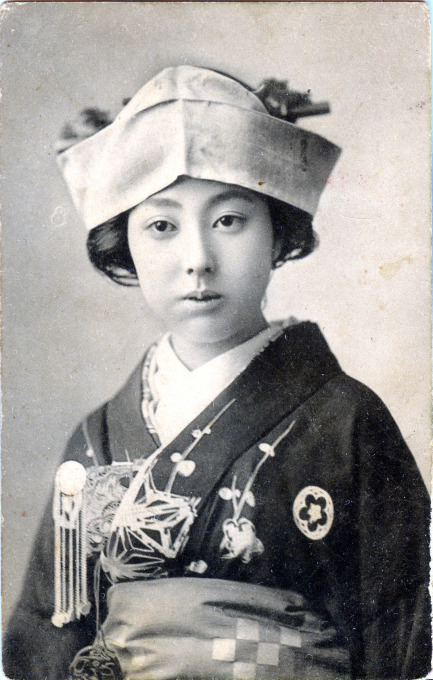
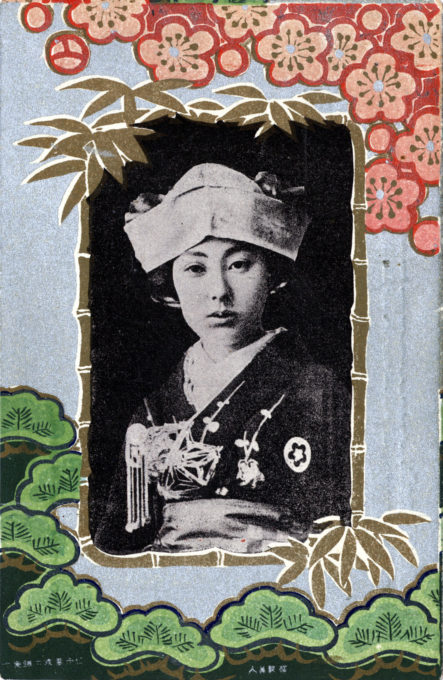
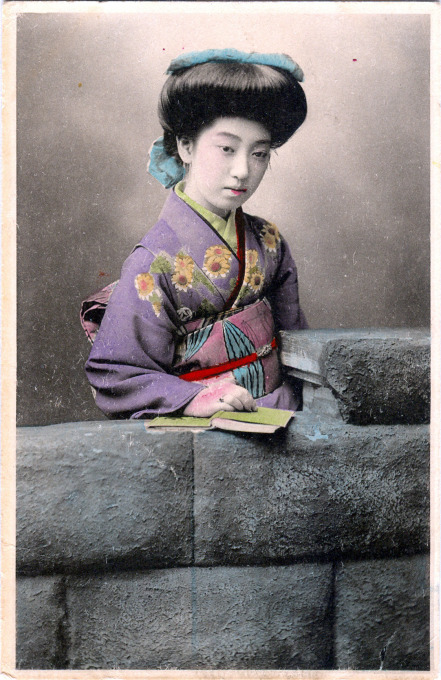
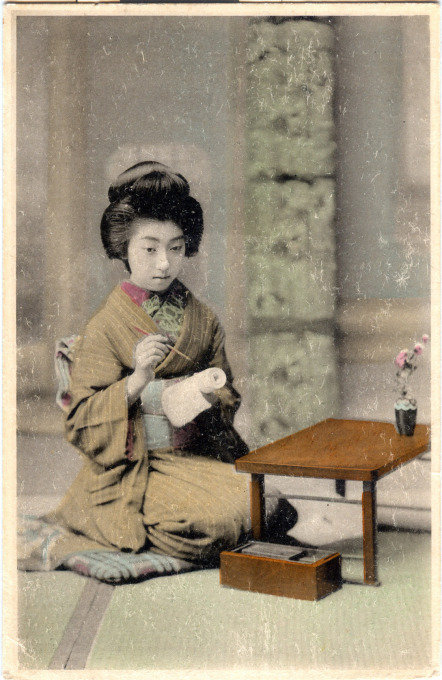
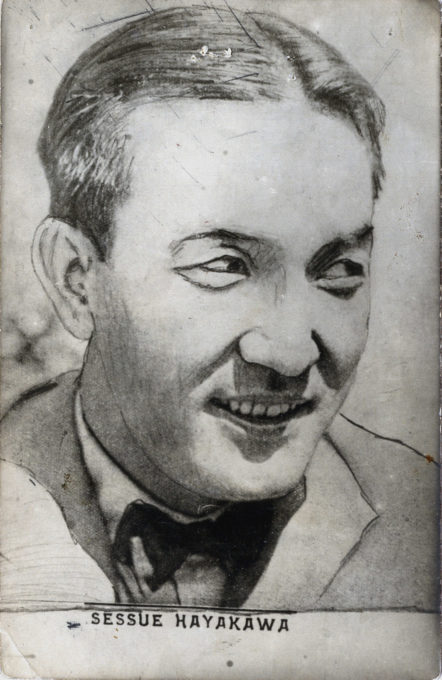
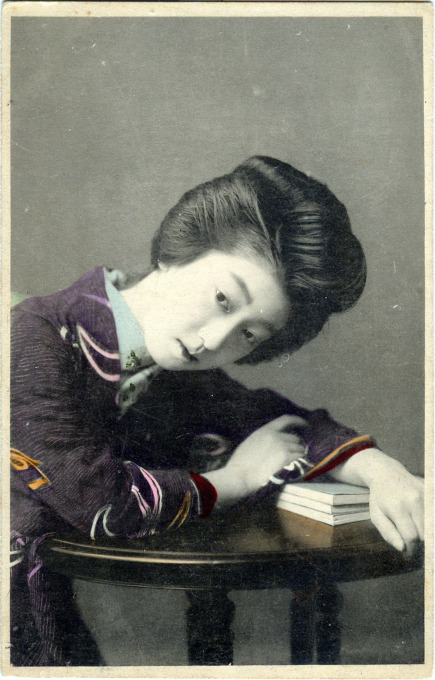
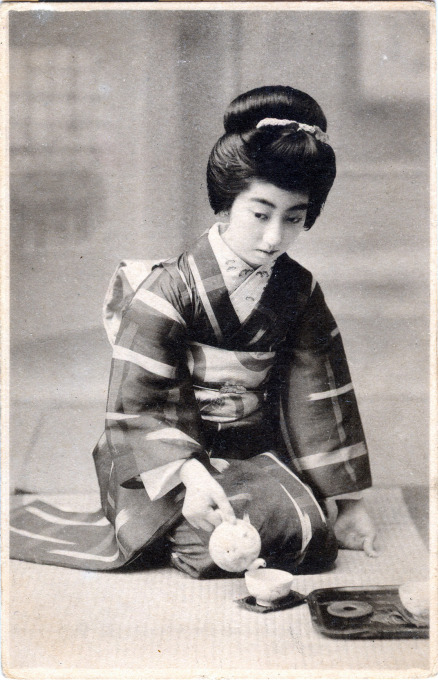
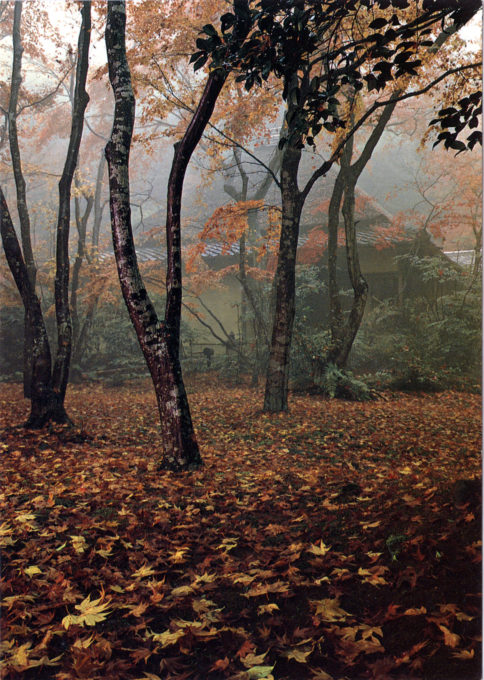
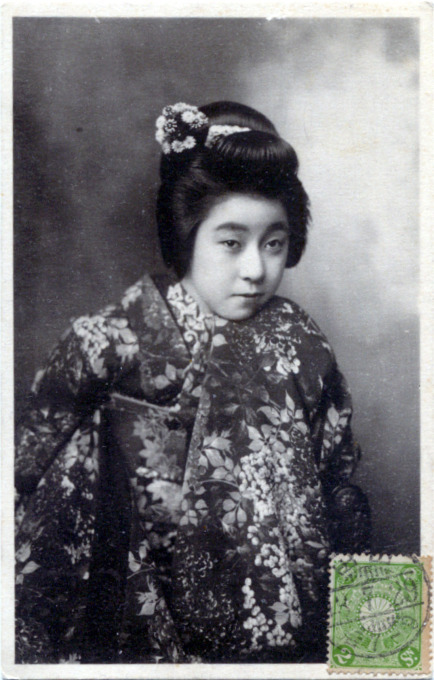
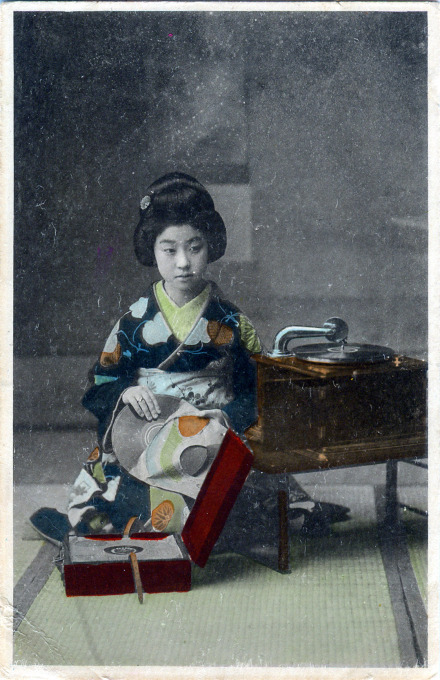
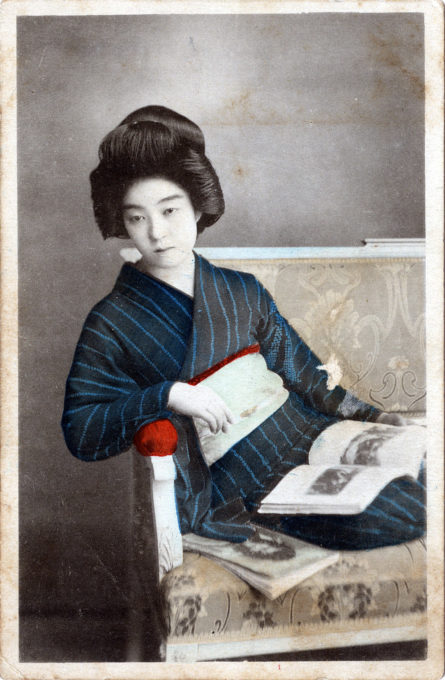
Pingback: The Smiling/Laughing Geisha, c. 1910. | Old Tokyo
Pingback: Teruha, the "Nine-fingered Geisha", c 1910 | lorrie graham
Pingback: The Kawakami Theater performing "Okan" at Meiji-za, Tokyo, c. 1905. | Old Tokyo
Pingback: Geisha and full moon, unknown artist, c. 1905. | Old TokyoOld Tokyo